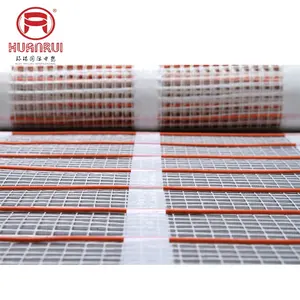Understanding Underfloor Heating Mat Resistance
Underfloor heating systems have gained immense popularity in both residential and commercial settings as a comfortable and efficient heating solution. Central to their functionality is the underfloor heating mat resistance, which directly affects the heating performance and energy consumption of the system. This resistance is crucial for determining how effectively the underfloor heating mat converts electrical energy into heat, ensuring uniform warmth across the surface.
Types of Underfloor Heating Mat Resistance
There are generally two types of underfloor heating mats based on their resistance properties:
- Low-resistance Mats: These mats are designed with fewer resistors and typically require lower voltage and current to operate. They are ideal for larger spaces where quick heating is essential.
- High-resistance Mats: These feature more resistors, allowing for higher heat generation per square meter. They are suitable for smaller areas or rooms that require additional warmth, like bathrooms or basements.
Applications of Underfloor Heating Mat Resistance
The application of underfloor heating mat resistance extends to a variety of settings, providing warmth and comfort in many environments:
- Residential Spaces: Commonly installed in homes, especially in tiled or stone-floored areas like kitchens, bathrooms, and living rooms.
- Commercial Establishments: Utilized in offices, retail stores, and showrooms to create a cozy atmosphere and reduce heating costs.
- Industrial Applications: Employed in places that require consistent temperature control, such as laboratories or manufacturing facilities.
Features and Advantages of Underfloor Heating Mat Resistance
The underfloor heating mat resistance comes with several outstanding features and advantages that enhance its appeal:
- Efficient Heat Distribution: The resistance ensures even warmth across the entire floor surface, eliminating cold spots.
- Energy Savings: Optimized resistance levels allow for lower energy consumption, reducing utility bills without compromising comfort.
- Space Savings: With no bulky radiators or heating units, underfloor heating mats maintain a clean and modern aesthetic in any space.
- Versatile Installation: Suitable for various floor coverings, including tile, laminate, and carpet, underfloor heating mats are adaptable to different environments.
- Comfort and Safety: Provides a delightful warm floor underfoot and enhances indoor air quality by reducing dust circulation.









































